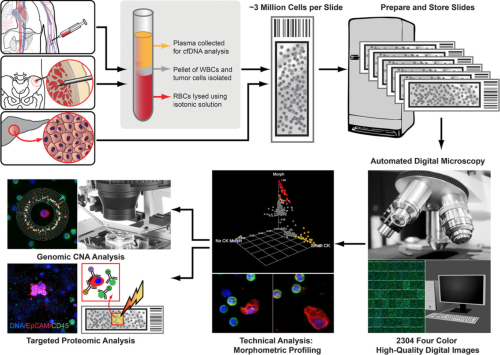Author: Michael A. Pacanowski, PharmD, MPH on June 21, 2018 
When we look at the weather report, it never simply says “the US is hot today.” Geography matters. We always get some nuances such as temperature, humidity, barometric pressure, chance of rain, air quality, and so on. These patterns are mapped down to the level of the nearest weather station, and dynamic models of the aggregate data allow for prediction of what it will be like outside in a few days. Similarly, in medicine, we never simply say “the patient has cancer.” We do well to elaborate – “cancer” is further described based on tissue, stage, histology, and now even the presence of a few genetic variants or overexpressed proteins. These features forecast, albeit not with great precision, how someone might feel, function, or survive down the road. However, our current “next-generation” technologies still average of molecular features across the tissue sample, which could potentially mask heterogeneity within a tumor.
To further elucidate the complex molecular pathology of cancer, many efforts have been undertaken to develop platforms that can assay single cells for multiple parameters (e.g., genomic alterations, protein expression, morphology). These so-called multiparameter single-cell analysis platforms have the potential to identify rare genetic variants in the tumor and other signaling or metabolic features that might otherwise not be seen in a clinical specimen using conventional approaches. Data from such analyses may provide greater insight into the mechanisms of tumor progression, and even optimize treatments for individual patients.
In 2013, a team of experts from academia, private industry, NIH, and FDA assembled to examine the state of the science and obstacles to translating single-cell analysis technologies to the clinic. In the May issue of CTS, Keating and colleagues present a major output of this initiative, providing a comprehensive overview of the various technologies that have been developed to produce highly-dimensional data, as well as some of the analytical, computational, clinical, and regulatory considerations. Enjoy!
Disclaimer: This publication reflects the views of the author and should not be construed to represent FDA’s views or policies.
Image by Keating, et al. Clin. Trans. Sci., doi 10.1111/cts.12536 is licensed under CC BY 4.0. ©2018 The authors.

The comment feature is locked by administrator.